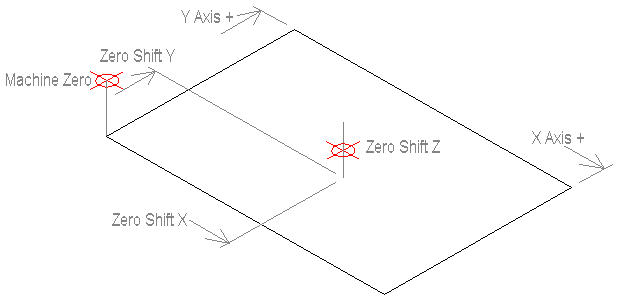 Programming,
Zero Points
Programming,
Zero Points
Zero Points can also be called Zero Shifts, Zero Offsets or Datum Points.
Zero Points allow parts to be programmed without regard for their position
on the machine or to machine more than one part on the machine without
re-coding all the points. If individual one batch parts are to be machined
then the zero point may be set when the machine is set up, if parts are
repeated, for example a quantity per month for a period of time then most
controls allow zero points to be stored in the program (an example
follows) which combined with fixtures dowel pinned to the machine bed allow
for much faster set up times.

It is common for six zero points to be available, but this varies from
control to control.
The commands to activate them are usually G54, G55, G56, G57, G58 and
G59.
The X, Y and Z values in the Zero Point become the new zero position
when the command G5x is used and all axis movement is now relevant to this
new position until either another zero point is activated or the zero point
is cancelled with a G53 command.
The G53 command makes all axis moves relative to Machine Zero. This
is used for tool changing and workpiece changing.
An example of coding a zero point in a program,
this applies specifically to the Bosch CC100 control but the principle
is the same for most controls.
N230 TRF=54 X=123.4 Y=132.5 Z=0
N240 G54
TRF means load a zero shift, 54 is the zero shift number and the X, Y and
Z values are the ones required.
The following line activates the Zero Point.
Back
to programming page

 Programming,
Zero Points
Programming,
Zero Points